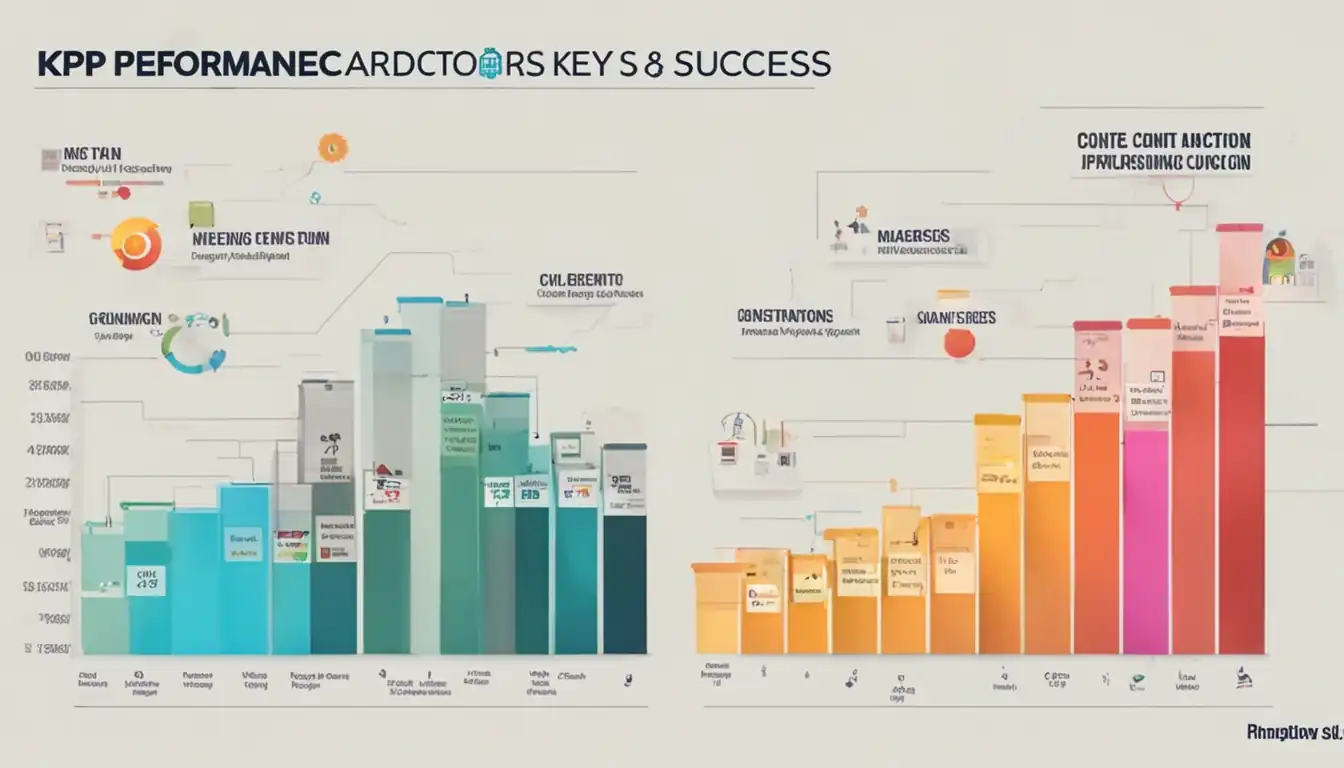Crafting a Strategic Content Plan: A Roadmap for Success

Crafting a strategic content plan is essential for any business looking to make an impact in the digital world. In this post, we'll explore the key components of a successful content plan, from understanding your audience to measuring success and future-proofing your strategy. Let's dive in and discover how to create a roadmap for content success.
Embracing the Content Planning Journey
Content planning is often seen as just another buzzword in the digital marketing world. However, it is much more than that. It is a strategic process that involves creativity, research, and analysis to create content that resonates with your target audience.
Why Content Planning Isn't Just a Buzzword
Content planning goes beyond simply creating content for the sake of it. It involves understanding your audience, their needs, and the best way to deliver valuable information to them. It's about creating a roadmap for your content that aligns with your business goals and objectives.
The Intersection of Creativity and Strategy
Content planning is where creativity meets strategy. It's about finding the balance between creating engaging and valuable content while also ensuring that it aligns with your overall marketing strategy. This intersection is where the magic happens, and it's what sets successful content apart from the rest.
Laying the Groundwork: Understanding Your Audience

Before diving into the world of content-driven SEO, it's crucial to lay the groundwork by understanding your audience. This involves delving into the art of crafting personas and listening to the digital pulse through social media insights.
The Art of Crafting Personas
Crafting personas is not just about creating fictional characters; it's about understanding the real people who make up your target audience. Personas are detailed profiles that represent different segments of your audience, helping you to understand their needs, preferences, and behaviors.
To craft effective personas, start by gathering data from various sources such as website analytics, customer surveys, and social media demographics. Look for patterns and commonalities among your audience members, and use this information to create detailed personas that humanize your target audience.
Listening to the Digital Pulse: Social Media Insights
Social media platforms are a goldmine of information about your audience. By actively listening to the digital pulse, you can gain valuable insights into the conversations, trends, and preferences of your target audience.
Utilize social media listening tools to monitor conversations, track keywords, and analyze sentiment around your brand and industry. Pay attention to the type of content that resonates with your audience, the language they use, and the topics that are of interest to them.
By understanding your audience through the art of crafting personas and listening to the digital pulse on social media, you can lay a strong foundation for your content-driven SEO strategy.
Setting the Stage: Defining Your Content Goals
Before diving into the world of content-driven SEO, it's crucial to set the stage by defining your content goals. This step is essential for ensuring that your content aligns with your business objectives and that you have a clear roadmap for success.
Aligning Content with Business Objectives
The first step in defining your content goals is to align them with your business objectives. Your content should support and enhance your overall business strategy, whether it's to increase brand awareness, drive lead generation, or boost sales. By aligning your content with your business objectives, you can ensure that every piece of content you create serves a purpose and contributes to the success of your business.
SMART Goals in Content Planning
Once you've aligned your content with your business objectives, it's time to set SMART goals for your content planning. SMART goals are specific, measurable, achievable, relevant, and time-bound. This framework ensures that your content goals are well-defined and actionable, giving you a clear direction for your content-driven SEO efforts. Whether it's increasing website traffic by 20% in the next six months or generating 100 new leads per month, setting SMART goals will help you stay focused and track your progress effectively.
The Content Planning Toolkit: Essential Components
Editorial Calendars: Your Content Compass
An editorial calendar is a crucial tool for guiding your content strategy. It provides a roadmap for your content creation, helping you stay organized and on track. By outlining your upcoming content topics, deadlines, and responsible team members, an editorial calendar ensures that your content is consistently aligned with your overall marketing goals. This tool not only keeps everyone on the same page but also allows for better coordination and collaboration across teams.
Content Audits: Learning from the Past
A content audit is a comprehensive analysis of all the content on your website. It involves evaluating the quality, relevance, and performance of your existing content to identify areas for improvement and optimization. By conducting a content audit, you can gain valuable insights into what content is resonating with your audience, what needs to be updated or removed, and where there are gaps in your content strategy. This process is essential for making informed decisions about future content creation and ensuring that your content remains valuable and impactful.
Brainstorming Sessions: Gather your team together for a brainstorming session to generate new ideas and content topics. Encourage everyone to share their thoughts and build upon each other's ideas. This collaborative approach can lead to unique and innovative content ideas.
Mind Mapping: Use mind mapping techniques to visually organize and connect different ideas and concepts. This can help to uncover new angles and perspectives for your content.
Role Playing: Engage in role-playing exercises to put yourself in the shoes of your target audience. This can help you to better understand their needs and preferences, leading to more relevant and impactful content.
Storytelling: Use storytelling techniques to explore different narratives and perspectives that can be woven into your content. This can add depth and emotional resonance to your material, making it more engaging for your audience.
Visual Inspiration: Use visual aids such as images, videos, and mood boards to spark creativity and inspire new content ideas. Visual stimuli can often trigger fresh perspectives and concepts for your content.
Structuring Your Content Plan
When it comes to creating a successful content-driven SEO strategy, structuring your content plan is crucial. The way you organize and map out your content can have a significant impact on its effectiveness in driving traffic and conversions.
The Pillar-Cluster Model: Organizing for Impact
One effective way to structure your content plan is by using the pillar-cluster model. This model involves creating a few pillar pieces of content that cover broad topics or themes related to your business or industry. These pillar pieces then act as the foundation for a cluster of related content that delves deeper into specific subtopics or aspects of the main theme.
By organizing your content in this way, you can create a cohesive and comprehensive resource for your audience while also signaling to search engines the depth and breadth of your expertise on a particular subject.
Mapping Content to the Buyer's Journey
Another important aspect of structuring your content plan is mapping your content to the buyer's journey. This involves understanding the different stages that a potential customer goes through before making a purchase decision and creating content that addresses their needs and concerns at each stage.
For example, you may create awareness-focused content for the top of the funnel, consideration-focused content for the middle of the funnel, and decision-focused content for the bottom of the funnel. By aligning your content with the buyer's journey, you can ensure that you are providing valuable and relevant information to your audience at every step of their decision-making process.
When it comes to content creation, it's important to have the right people on your team. Building your content dream team involves finding individuals with a variety of skills and expertise. This may include writers, editors, graphic designers, SEO specialists, and more. Balancing in-house and outsourced content can also be a key strategy for maximizing resources and ensuring high-quality content. Here's a breakdown of who does what in content creation:
| In-House Content | Outsourced Content |
|---|---|
| Writers | Freelance writers |
| Editors | Graphic designers |
| SEO specialists | Content strategists |
By utilizing both in-house and outsourced resources, you can take advantage of the unique strengths of each while also managing costs effectively. This approach allows for a diverse range of expertise and perspectives to be brought to the table, ultimately leading to more comprehensive and impactful content.
Crafting Quality Content: A Closer Look at Execution

When it comes to creating quality content, the execution is just as important as the idea itself. Writing with SEO in mind is crucial for ensuring that your content is discoverable and reaches the right audience. By incorporating relevant keywords, meta descriptions, and internal links, you can improve the visibility of your content on search engines.
In addition to written content, the role of multimedia in engaging content cannot be overstated. Including images, videos, infographics, and other visual elements can enhance the overall user experience and make your content more shareable. Quality multimedia can also improve the time spent on page and reduce bounce rates.
When crafting quality content, it's essential to consider both the written and visual aspects to ensure that your content is not only informative but also engaging and accessible to a wide audience.
Measuring Success: Content Planning KPIs

When it comes to measuring the success of your content planning efforts, it's crucial to focus on the right Key Performance Indicators (KPIs). These metrics will help you understand the impact of your content and make informed decisions for future planning.
Vanity vs. Value: Metrics that Matter
It's easy to get caught up in vanity metrics such as page views, likes, and shares. While these numbers may look impressive, they often don't provide a true reflection of the value your content is providing. Instead, focus on metrics that truly matter, such as:
- Conversion Rate: This metric tells you how many of your visitors are taking the desired action, whether it's making a purchase, signing up for a newsletter, or downloading a resource.
- Engagement: Look at metrics like time on page, scroll depth, and social media comments to gauge how engaged your audience is with your content.
- ROI: Ultimately, you want to know if your content is driving a return on investment. Track metrics like cost per lead or cost per acquisition to understand the financial impact of your content efforts.
By prioritizing these value-driven metrics, you can ensure that your content planning is focused on delivering real results for your business.
Adjusting Your Sails: The Art of Iteration
Once you've identified the right KPIs for your content planning, it's important to remember that success is not a one-time achievement. The art of iteration involves continuously analyzing your metrics, identifying areas for improvement, and making adjustments to your content strategy.
Use your KPIs as a compass to guide your content planning efforts. If you're not seeing the results you want, don't be afraid to make changes. Whether it's tweaking your messaging, experimenting with different content formats, or targeting a new audience, iteration is key to long-term success.
By staying focused on the metrics that matter and embracing the art of iteration, you can ensure that your content planning efforts are driving real value for your business.
Navigating Challenges in Content Planning
Overcoming Common Roadblocks
When it comes to content planning, there are a few common roadblocks that can hinder progress. These may include a lack of resources, unclear goals, or difficulty in creating engaging content. However, by identifying these roadblocks and finding creative solutions, it is possible to overcome these challenges and move forward with a successful content strategy.
Staying Agile in a Changing Content Landscape
In today's fast-paced digital world, the content landscape is constantly evolving. This means that staying agile and adaptable is crucial for success. By keeping a close eye on industry trends, consumer behavior, and emerging technologies, content planners can adjust their strategies to remain relevant and effective. This flexibility allows for quick pivots and adjustments to ensure that content remains engaging and impactful.
By addressing these common roadblocks and staying agile in a changing content landscape, content planners can navigate challenges with confidence and drive success in their content-driven SEO strategies.
Future-Proofing Your Content Plan

In the ever-changing landscape of content marketing, it's crucial to future-proof your content plan to stay ahead of the game. This involves staying ahead of content trends and continuously learning and adapting in your content planning.
Staying Ahead of Content Trends
Staying ahead of content trends means keeping a close eye on industry developments, consumer behavior, and emerging technologies. By staying informed and proactive, you can anticipate shifts in content consumption and adjust your strategy accordingly. This might involve leveraging new platforms, embracing different content formats, or tapping into emerging topics and themes.
Continuous Learning and Adaptation in Content Planning
Continuous learning and adaptation in content planning is essential for long-term success. This means regularly evaluating the performance of your content, gathering insights from analytics, and using this data to refine and optimize your strategy. It also involves being open to experimentation, testing new approaches, and being willing to pivot when necessary.
By future-proofing your content plan through staying ahead of content trends and continuously learning and adapting, you can ensure that your content remains relevant, engaging, and effective in the face of ongoing changes in the digital landscape.
Conclusion
By embracing the content planning journey, understanding your audience, and setting clear content goals, you can lay the groundwork for a successful strategy. With the right toolkit, brainstorming techniques, and a structured approach, you can craft quality content that engages your audience. And by measuring success, navigating challenges, and future-proofing your plan, you can ensure that your content strategy continues to deliver results in a rapidly changing digital landscape.